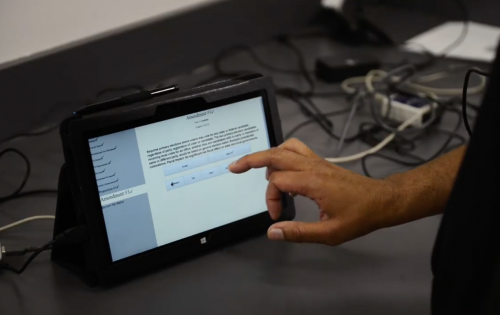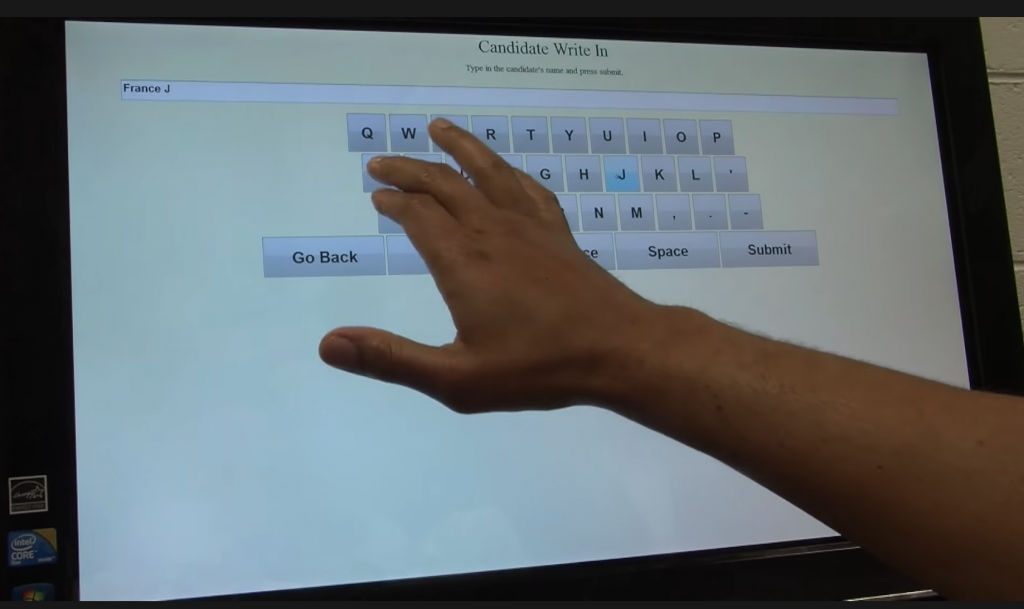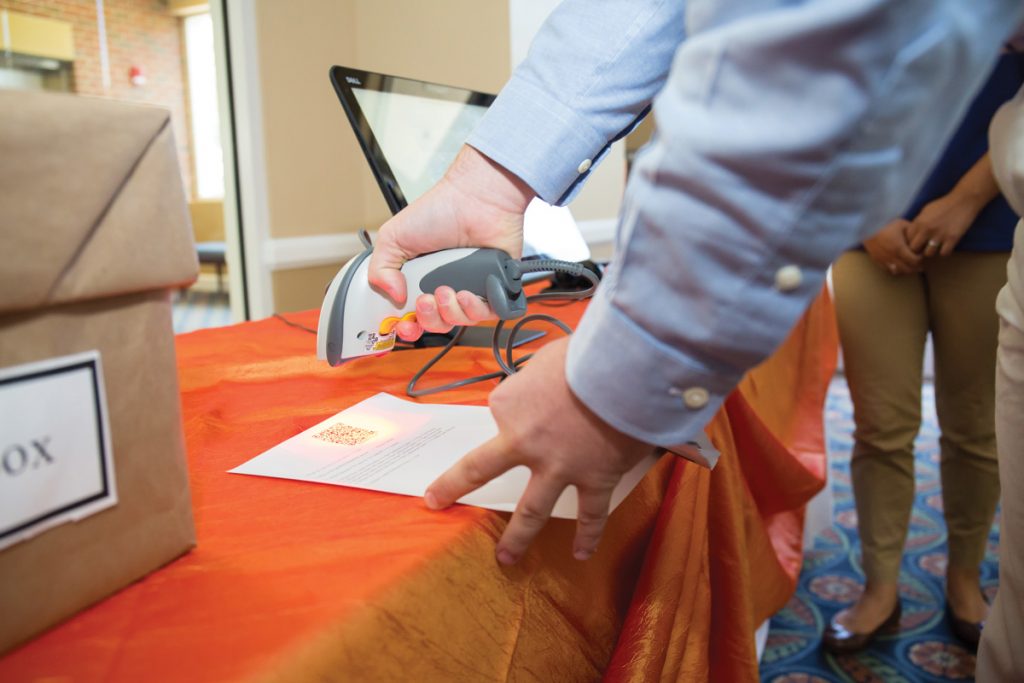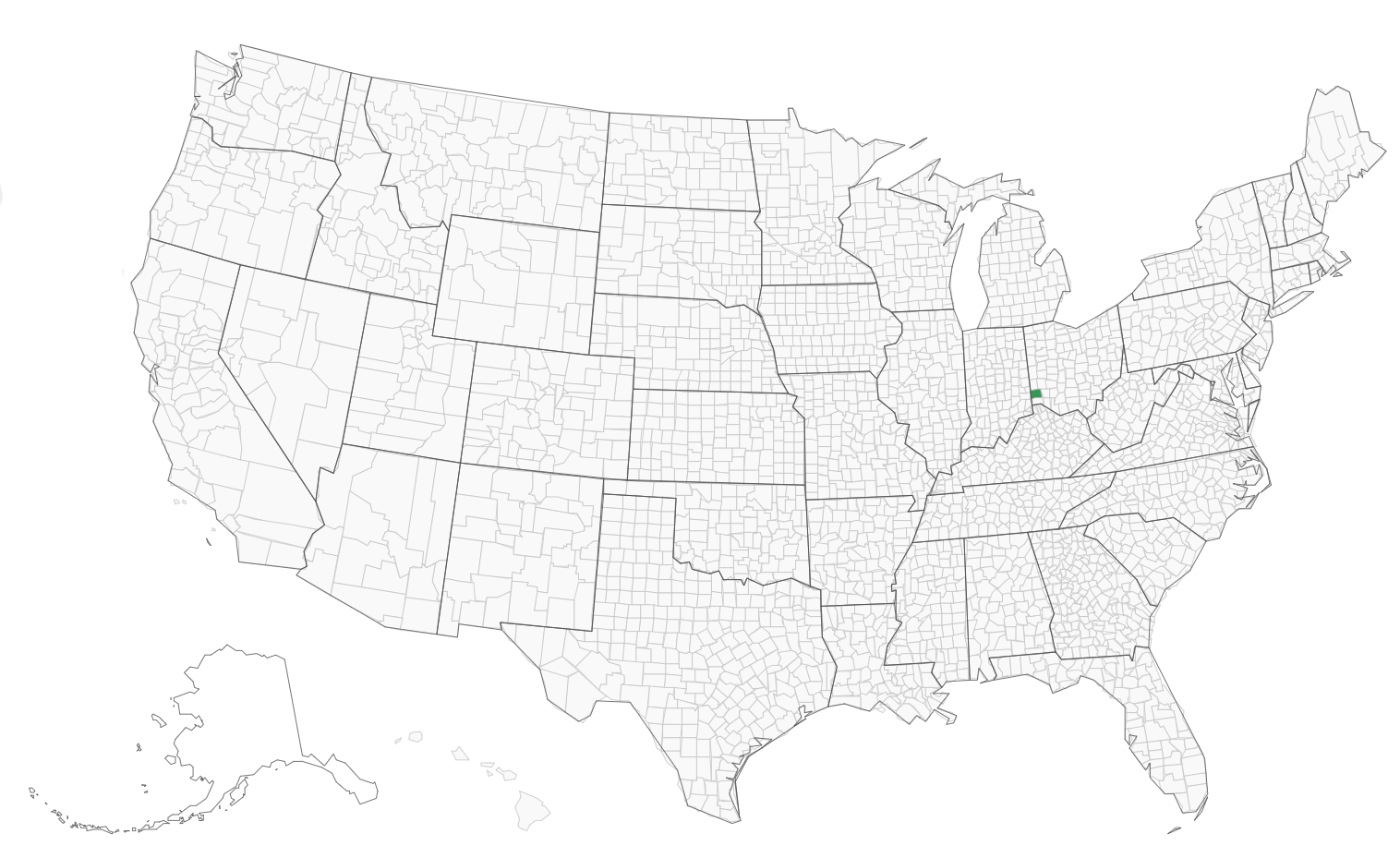
Prime III*
Prime III
Make / Model: Prime III
Equipment Type: Remote Ballot Marking System
Back to Voting Equipment Database
Overview

Prime III was developed in 2003 by Dr. Juan Gilbert as an accessible voting system. In 2015, Prime III was released as open-source software, allowing anyone to download the software and use it with a commercial off-the-shelf (COTS) computer, printer, and, if needed, Audio Tactile Interface (ATI). Prime III was used in New Hampshire in polling places as a ballot marking device called One4All. In 2018, Butler County, Ohio began offering Prime III as their remote ballot marking system.
In 2020, Butler County, Ohio remains the only jurisdiction offering Prime III as a remote ballot marking system for overseas and military voters and for voters with disabilities. It is certified for use in California.
Voting Process


To vote using Prime III, a voter inputs paper into their printer and accesses the web-based remote ballot marking system via a link or a QR code with an embedded link. The voter does not authenticate themselves using personally identifiable information — if authentication is required, it is handled by the jurisdiction.
A voter can vote using their voice by responding to prompts from the system (e.g. to vote using your voice, say “vote”). The voter may also touch the screen to vote or can use their own Audio Tactile Interface (ATI).
The voter is provided an overview of each contest or is told by the system how many candidates are in each contest. The voter selects a candidate and selects “Continue” to move to the next contest. The voter can navigate backward through the system by selecting “Back.” The voter can also clear a contest or can proceed to the review screen at any time.
To write in a candidate, a voter selects “Candidate write in” and enters their chosen candidate’s name. If the voting is voting by voice or using their ATI, the system reads back the candidate’s name to the voter and the voter next selects “Submit.”
When the voter is finished making selections, the voter selects “Review My Ballot” to access the review screen. The review screen displays the voter’s ballot summary, which shows the voter’s choices only — not all candidates in a contest. If the voter is voting by voice or using their ATI, the system reads the voter’s choices. The voter is warned of any undervotes on this screen. If the voter is satisfied, they select “Submit My Ballot” to print their ballot.
The voter’s printed ballot is a summary ballot, with the contest displayed on the top of the paper. When the elections office receives the voter’s ballot, officials can use a scanner with optical character recognition (OCR) or the system can be configured with a QR code, which encodes the voter’s selections.
Prime III also supports televoting, which allows an eligible voter to vote using the remote ballot marking system while connected to a poll worker, who ultimately receives and prints the voter’s marked ballot, which the voter can review on their computer or tablet screen.
Videos
Prime III & Balloting Demo May 2013
To Start Voting, Say Vote | Juan Gilbert | TEDxUF
References
Manufacturer Profile

University of Florida
P.O. Box 116120
Gainesville, FL 32611
contact@primevotingsystem.org
http://primevotingsystem.com/
Prime III was conceived in 2003 at Auburn University and developed at Clemson University’s Human Centered Computing Lab to be as usable as possible by as many people as possible. Dr. Juan E. Gilbert gave Prime III its name as it is considered a third-generation multimodal voting system that allows voters to cast their ballot using touch, voice, or both.
